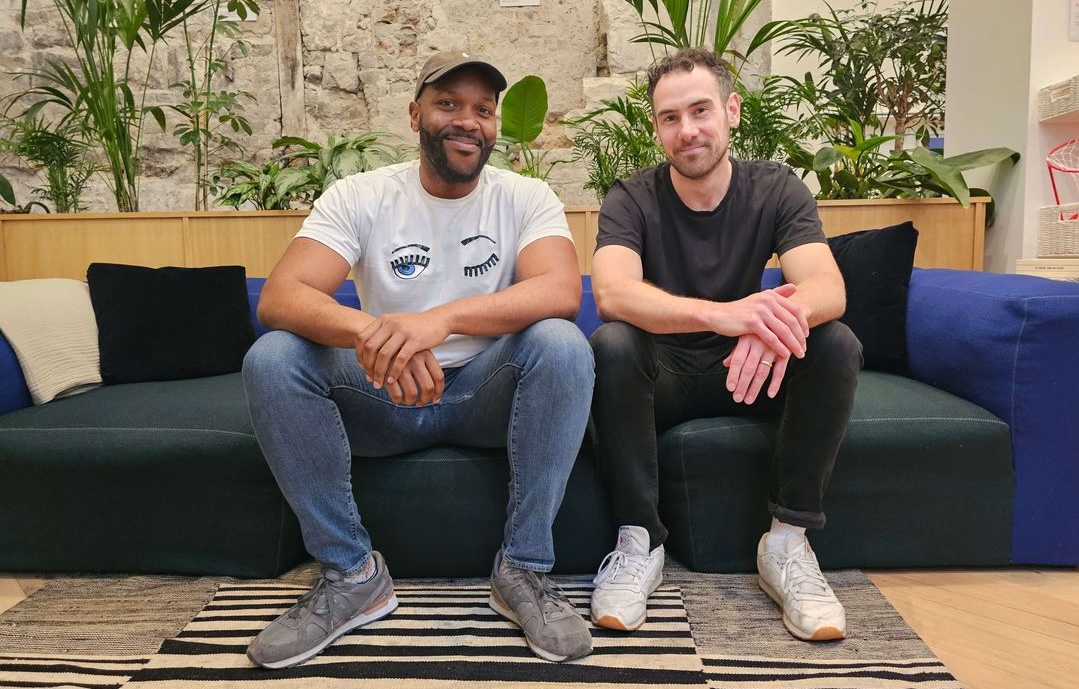ImpactAlpha, July 5 — In April, 19 private equity firms committed to providing equity shares to employees at some portfolio firms, as part of the new nonprofit Ownership Works initiative, which has a goal of creating $20 billion in wealth for low- and moderate-income workers over the next decade. Seems like good news. But we urge impact investors to be skeptical.
The industry that has done the most damage to job quality and worker security over the last two decades claims to be reversing course. And there will be workers who see a nice hit of cash. But ownership? Not really. What these PE firms are doing falls far short of what authentic employee ownership represents, which is the beginning of a truly democratic economy where ordinary people have more control over their lives, more stability in their work, a fair share in the wealth they create, and the chance to own and control the places where they work.
Authentic employee ownership, where workers own a substantial portion, if not the entire business, already exists at about 6,000 privately held U.S. firms. The goal of impact investors should be to scale this type of worker ownership—through Employee Stock Ownership Plans (ESOPs), Employee Ownership Trusts (EOTs), and worker cooperatives. Already, ESOPs at privately held firms hold about $200 billion in retirement assets for more than 1.5 million workers. When these structures are combined with democratic and participatory cultures, companies and workers thrive, and communities benefit from stable, long-term quality employment and wealth that recirculates in the local community.
A Tale of Two Guitar Companies
An example of a transition to authentic employee ownership is the recent change of ownership at Taylor Guitars, a firm that had 1,200 workers and $122 million in revenue at the time it transitioned to 100% employee ownership. The founding owners sold to an ESOP trust, with financing from a $100 billion Canadian pension fund and Social Capital Partners.
The debt offering has a 10-year horizon and the flexibility of no required principal payments for the life of the loan. This ensures the company will never be put at risk, and that it can continue to grow and innovate. The Healthcare of Ontario Pension Plan gets a long-term return perfectly matched to the needs of its pensioners. And once the loan is paid off, the workers will own the firm free and clear and enjoy the full potential of the financial upside.
Compare this deal to the acquisition of Gibson Guitars in 2018 by the private equity firm KKR. After purchasing the company out of bankruptcy, KKR recently piled on $250 million in new debt, using $225 million of that for a special dividend to its private equity fund partners. At around the same time, it announced $7 million in profit sharing for Gibson’s estimated 800 employees, which is less than $9,000 each.
Gibson employees might yet get a more substantial bonus when KKR sells Gibson, but the real winners will be KKR’s executives and investors. For them, providing limited equity to the workers improves productivity and thereby increases value for the next sale. John Danhakl from Leonard Green and Partners, a private equity firm with $50 billion in AUM, said as much at a Milken Institute webinar, where he noted, the returns at their portfolio companies with broad-based ownership exceeded those with more traditional constructs. The 10 companies in the firm’s portfolio with the broadest ownership returned four times the equity invested by limited partners, he observed.
With that kind of return on investment, workers at those companies probably did well, too. But is their 5% stake a fair share of the wealth they’re creating? And what happens to their jobs when private equity sells the company? Experience shows downsizing and layoffs often ensue, as the next owners try to extract as much wealth as possible. Worker-owners at Taylor Guitars don’t face these pressures.
What’s a fair share?
Many impact investors want to address the growing wealth gap that is undermining democracy and economic stability in the U.S. But if employees get a small percent of the equity shares in a private equity portfolio company, while executives get a lion’s share, the wealth gap will continue to grow.
“This is not the solution,” says Delilah Rothenberg of The Predistribution Initiative (PDI). Rothenberg, who co-founded and leads PDI, is concerned about the fact that as of 2020, institutional investors have on average moved nearly 20% of their capital (an increase of nearly 5% since 2012, according to McKinsey) into private equity funds, without properly assessing the systemic risk of wealth concentration.
McKinsey’s latest private market annual review reports private equity has $6.3 trillion in AUM; PE top executives are outsize earners as a result of the “2 and 20” compensation structure, which nets them a fee of 2% of assets under management plus 20% of profits. In 2017, the last year for which compensation figures were available, KKR executives occupied four of the top 10 slots among the most highly paid executives in the U.S., making an average of $167 million each during that one year, Bloomberg reports.
Compare that to even the best gains for workers through the new equity model: when KKR recently sold C.H.I. Overhead Doors, workers received on average $175,000.
To be sure, for many workers, this is a life-changing amount of money. But given the vast chasm between that worker wealth and the returns to executives and investors, the PE approach to worker equity only makes the structural problems facing the global economy worse, explains Rothenberg.
As wealth pools at the top, “that vast inequality is a systemic risk to markets and portfolios,” she notes. “When a few people have extraordinary wealth, their marginal propensity to spend is less. The very rich then lend their excess wealth to others to spend and that can lead to credit crises.”
Among impact investors, some are asking the question, “what’s enough?”
Deborah Frieze of Boston Impact Initiative Fund says when her fund invests equity, it caps the return at a two- or three-times multiple. “The rest,” she says, “should go to the owners and workers who are creating the value.”
Providing equity to workers at large scale firms is better than giving them nothing, Frieze acknowledges. But it needs to be seen in context. “It’s raising the floor of the worst actors in the economy,” she says. “That’s worth doing, bringing a little more compassion and care to the system. But it’s not transformative. It’s not closing the wealth gap, and it’s not centering worker voice and worker power.”
Doing Ownership Right
Genuine employee ownership, designed to close the wealth gap and strengthen communities, is “firmly grounded in democratic decision making, building employee voice and agency, and promoting shared prosperity,” says Diane Ives, program officer at The Kendeda Fund, which has been a leader in building an infrastructure to scale high-impact employee ownership. Kendeda invested $24 million in philanthropic equity to seed the launch of several employee ownership funds, including the Fund for Employee Ownership at the Evergreen Cooperatives of Cleveland, which our organization helped to design and launch.
Authentic employee ownership means long-term stability and worker control. But ceding real wealth and real power to workers is not how private equity operates. To take just one sector, 1.3 million jobs in retail have been lost in the last decade due to private equity. When KKR and other PE firms loaded Toys R Us with massive debt and failed to invest in the brand, for example, the company went bankrupt and 30,000 workers lost their jobs.
PE is about maximizing short-term gains for investors and executives, often on the backs of workers. Its fundamental business model is light years removed from real employee ownership, which yields long-term, sustainable jobs that contribute to family and community stability – and at its best, policies and practices that institutionalize worker voice and power in decision making.
As investors evaluate the social impact of various forms of employee ownership, applying a worker-centric lens could help to assess real social impact. “Risk and return should not only apply to investors,” says Frieze. “We can apply that same concept to workers. What risk should workers bear, and what is an appropriate return for their labor?”
There are multiple ways to protect worker interests—and to ensure investors a market-rate return in an employee ownership transition. The Taylor Guitar deal is a case in point. The pension fund considered that a low-risk loan, as it was entirely secured by the value of the company—and the leadership team that had built the guitar company remained in place during the transition.
As more money enters the field and employee ownership is recognized as an asset class, having non-extractive standards for investments can help to minimize risk for workers. The Guidelines for Equitable Employee Ownership Transitions, developed by our organization and the Soros family office along with many leaders in the employee ownership field, provides a framework for ensuring equitable deals that optimize benefit for workers.
Finally, it is essential that investors require measurement and reporting on impact. Currently, private equity is entirely unregulated and reports very little. Impact investors should require data on wages and benefits, ratios of executive to worker compensation, numbers on job creation and job losses, and level of worker engagement from operational decision making through board governance. Only such metrics can tell us whether workers are receiving the long-term benefits their labor deserves.
Marjorie Kelly is distinguished senior fellow at The Democracy Collaborative (TDC), coauthor with Ted Howard of The Making of a Democratic Economy. Karen Kahn is editor of TDC’s Employee Ownership News, where a series of commentaries examines the Ownership Works initiative.











